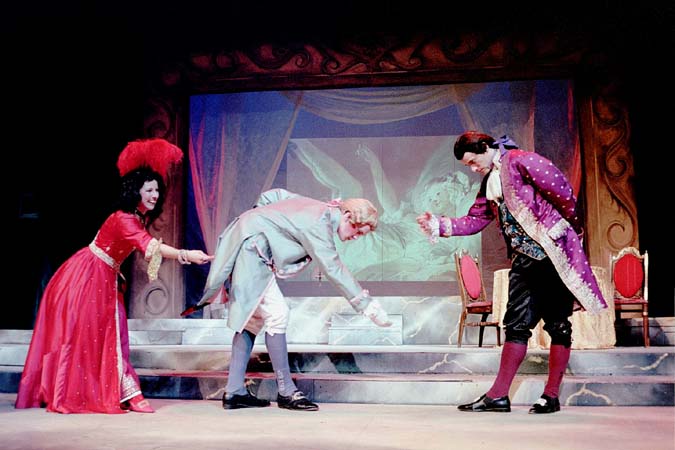
ShowCases: shows.vtheatre.net
|
Stanislavsky: Только при артистическом подъеме часы кажутся минутами.
The modern Western expression of reincarnation emerged during the Enlightenment of the eighteenth century and was revived by such nineteenth century occultic movements as Theosophy, founded by the influential Madame H P Blavatsky.
...
|
Metempsychosis literally means "transference of souls," and is related to the process of reincarnation. Synesius (AD 370-480), Bishop of Ptolemais, also taught the concept, and in a prayer that has survived, he says: "Father, grant that my soul may merge into the light, and be no more thrust back into the illusion of earth." Others of his Hymns, such as number III, contain lines clearly stating his views, and also pleas that he may be so purified that rebirth on earth will no longer be necessary. In a thesis on dreams, Synesius writes: "It is possible by labor and time, and a transition into other lives, for the imaginative soul to emerge from this dark abode." Henry More (1614-1687), the noted clergyman of the Church of England and renowned Cambridge Platonist, wrote in his long essay The Immortality of the Soul -- a considerable study of the whole subject of the soul, with cogent answers to critics of pre-existency. His poem A Platonick Song of the Soul tells it beautifully:I would sing the Prae-existency Of humane souls, and live once o'er again By recollection and quick memory All that is past since first we all began. But all too shallow be my wits to scan So deep a point and mind too dull to clear So dark a matter, . . .
The nature of the soul Is there a part of the human being which exists in either time or space separately from the material body? Does the soul exist prior to birth into a material body? Does the soul exist after the death of the material body? Is there one soul in the universe or many? What is the nature of the soul? Are identity and selfhood real or are they conceptual illusions?Historical : * Jainism -- belief in multiple souls -- freeing the soul from the bondage of continuous rebirth into material existence -- important conceptual advance from transmigration to reincarnation.
* Buddhism -- for the Buddha, karma was a psychological force (rather than the material force of the Jains and Brahmans) which was maintained by desire.
The laws of karma are a psychological problem and relate to one's thoughts. Therefore the psychological elimination of desire would free the individual from the cycle of rebirth. Some branches of Buddhism, notably Tibetan Buddhism, introduce a concept of reincarnation expanded to include a sequence of celestial worlds.
Aristotle -- cyclical view of time with an increase in knowledge
Hasid -- Inverse progressive movement from the Age of Gold to those of Silver, Bronze and Iron, ending with the destruction of the world.
Soul was material and co-existent with the body.
Plato and Pythagoras -- transmigration of the soul
Hebrew religion and a belief in a linear movement of time
Early views of cyclical time, gradual accumulation of evil and a periodic cleansing by God -- soul is material and co-existent with the body
Messianic redemption in historic time
Christianity
Augustine "The City of God" (426 AD)
7 periods of world history -- we're in the 6th and the next one will be the final epoch with the return of Christ
Is soul separate from or identical with the body -- i.e. belief in a literal resurrection of the body
18th and 19th century -- Syncretism in times of great cultural pluralism Communications and travel again bring a mixture of East and West -- Freemasonry, Theosophy, the teachings of Alice Bailey and other metaphysical systems mix eastern ideas with western.

